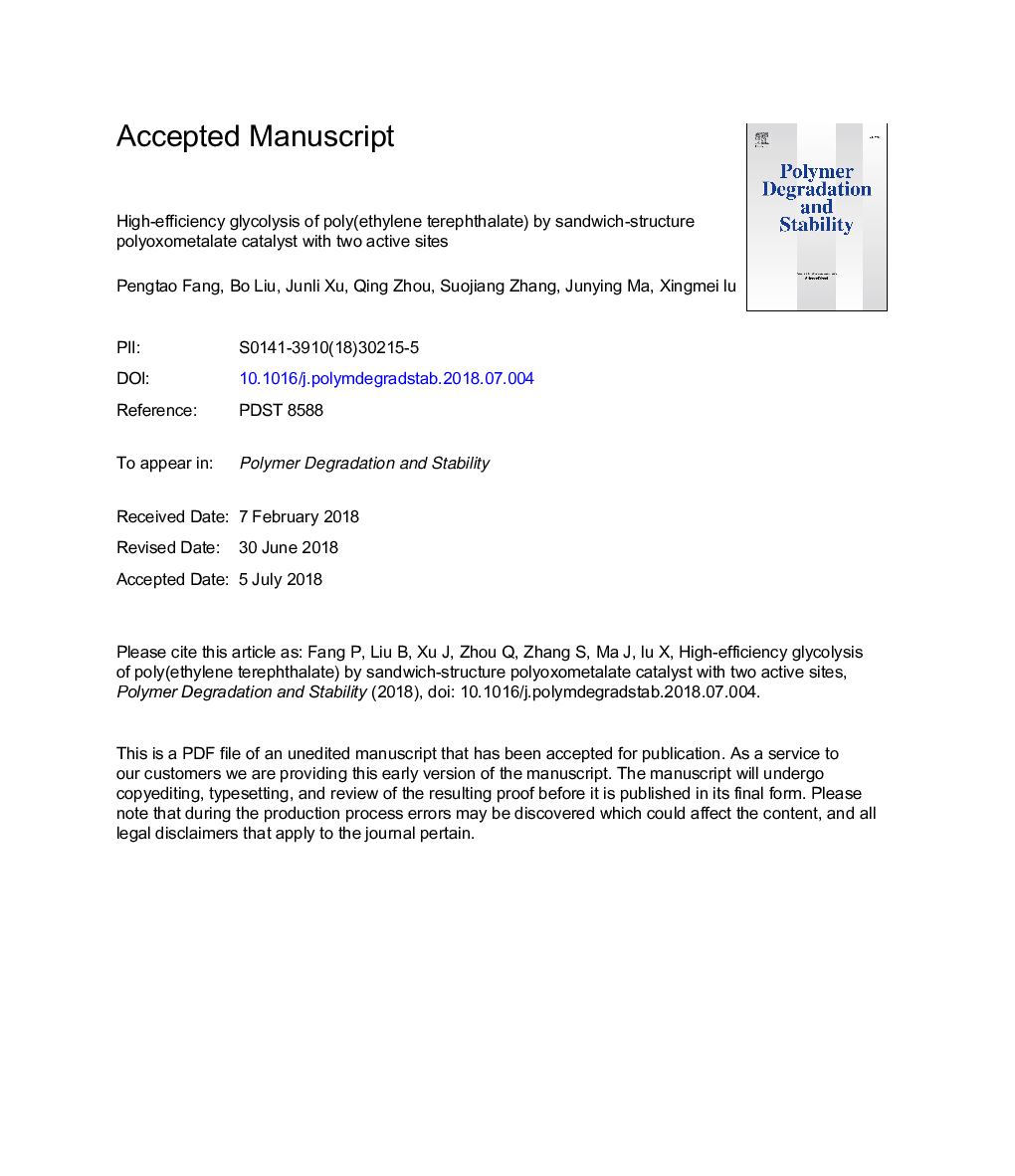| Article ID | Journal | Published Year | Pages | File Type |
|---|---|---|---|---|
| 7823889 | Polymer Degradation and Stability | 2018 | 32 Pages |
Abstract
Catalyst in the process on glycolysis of poly (ethylene terephthalate) (PET) wastes is a significant critical factor, which determine the efficiency and the cost of PET degradation. In this study, a kind of transition-metal-substituted polyoxometalates (POMs) Na12 [WZnM2(H2O)2(ZnW9O34)2] (Mâ¯=â¯Zn2+, Mn2+, Co2+, Cu2+, Ni2+) which have a sandwich-structure and more than two transition metal active sites show excellent catalytic performance in the glycolysis of PET under mild conditions. We investigated the effects of temperature, reaction time and catalyst amount on PET degradation and obtained the glycolysis optimal conditions. The PET could be fast and completely degraded at 190â¯Â°C for 40â¯min with low catalyst/PET molar ratio (0.018%) and high PET/Ethylene Glycol (EG) weight ratio (1:4), and the yield of bis(hydroxyethyl) terephthalate (BHET) is higher than 84.5%. After four-times recycling, the conversion of PET and the yield of BHET can still reach 100% and 84.5%. The exact structure of POMs Na12 [WZnM2(H2O)2(ZnW9O34)2] is confirmed by Single Crystal X-ray Diffraction (SC-XRD). Compared with traditional heteropolyacid catalysts, this catalyst possessed of at least two transition metal active sites, which lead to its an excellent catalytic capacity. The possible coordination activates mechanism for PET glycolysis is also proposed.
Related Topics
Physical Sciences and Engineering
Chemistry
Organic Chemistry
Authors
Pengtao Fang, Bo Liu, Junli Xu, Qing Zhou, Suojiang Zhang, Junying Ma, Xingmei lu,
